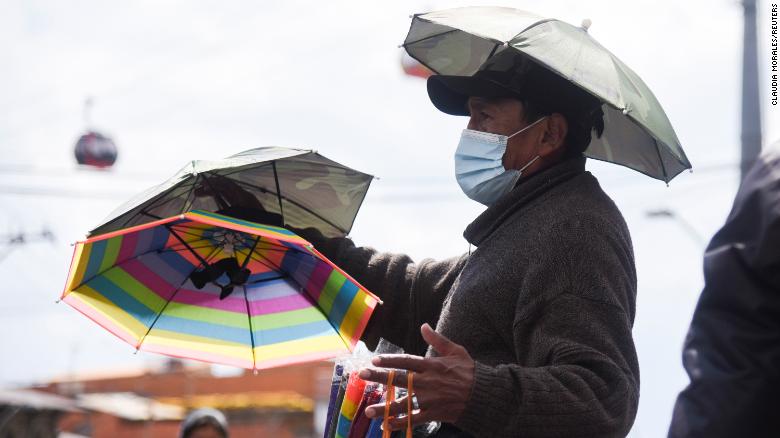
© Claudia Morales/Reuters via CNN news
Pre-reading questions:
I will read each question. Then, please answer them.
- What is the ideal weather temperature for you?
- When is the rainy season in your country?
Vocabulary:
I will read the words, meanings, and sample sentences. Then, repeat after me.
- heatwave /HEET-weyv/
- extreme /ik-STREEM/
- last /lahst/
- value /VAL-yoo/
- impact /IM-pakt/
[noun] – a period of time such as a few weeks when the weather is much hotter than usual
According to the news, we can expect more heatwaves in the coming months.
[adjective] – very large in amount or degree
Most areas in Russia experience extreme cold.
[verb] – to continue to exist
These machines should last for about ten years.
[noun] – a number or symbol that represents an amount
We need to set the speed limit to a fixed value.
[noun] – a powerful effect that something, especially something new, has on a situation or person
Jane’s public speech had a positive impact on the students.
Article reading:
Please read the whole article. Then, I will check your pronunciation and intonation.
The city of La Paz in Bolivia’s highlands had been hit by an unusual heatwave, with levels of ultraviolet (UV) radiation rising. On a scale that normally only goes up to 20, UV radiation levels in the area have just reached 21. The World Health Organization considers a UV index of 11 to be “extreme,” so people are recommended to limit their sun exposure. “The heat is burning. The sun isn’t normal,” said La Paz resident Segundina Mamani. People in the mountains keep cool by eating shaved ice and hiding in the shade. An atmospheric physics expert in La Paz, Luis Blacutt, claimed that the rainy season may bring the same amount of rain as usual, but only for a short time. Despite some rain this week, the laboratory expects the increased UV levels to last about another week. Due to the delayed development of clouds, the UV radiation input is more noticeable.
The high-level Andean regions of South America are exposed to some of the world’s most dangerous UV radiation, with its index values reaching record highs of over 40 at times. However, numbers between 11 and 17 are more common. As world leaders assemble in Glasgow for the COP26 climate conference, some Bolivian scientists argue that changing rainfall patterns are intensifying UV radiation’s impacts by reducing cloud cover.
The high-level Andean regions of South America are exposed to some of the world’s most dangerous UV radiation, with its index values reaching record highs of over 40 at times. However, numbers between 11 and 17 are more common. As world leaders assemble in Glasgow for the COP26 climate conference, some Bolivian scientists argue that changing rainfall patterns are intensifying UV radiation’s impacts by reducing cloud cover.
Comprehension questions
I will read each question. Then, please answer them based on the article.
- What is the recorded UV radiation levels in La Paz?
- What UV index does the World Health Organization consider as “extreme”?
- What did Luis Blacutt explain about the rainy season in La Paz?
- Based on the article, what UV index numbers are considered common?
- According to some Bolivian scientists, what does changing rainfall patterns do?
Discussion questions
I will read each question. Then, please answer them.
- How do you deal with high temperatures?
- Do you think the temperatures in your country are higher than usual? Please explain your answer.
- If you were a resident of La Paz, what would your initiatives be to overcome the intense heat?
- What should the Bolivian government do to help the residents deal with the tremendous heat?
- What harmful effects do UV radiations bring to people?